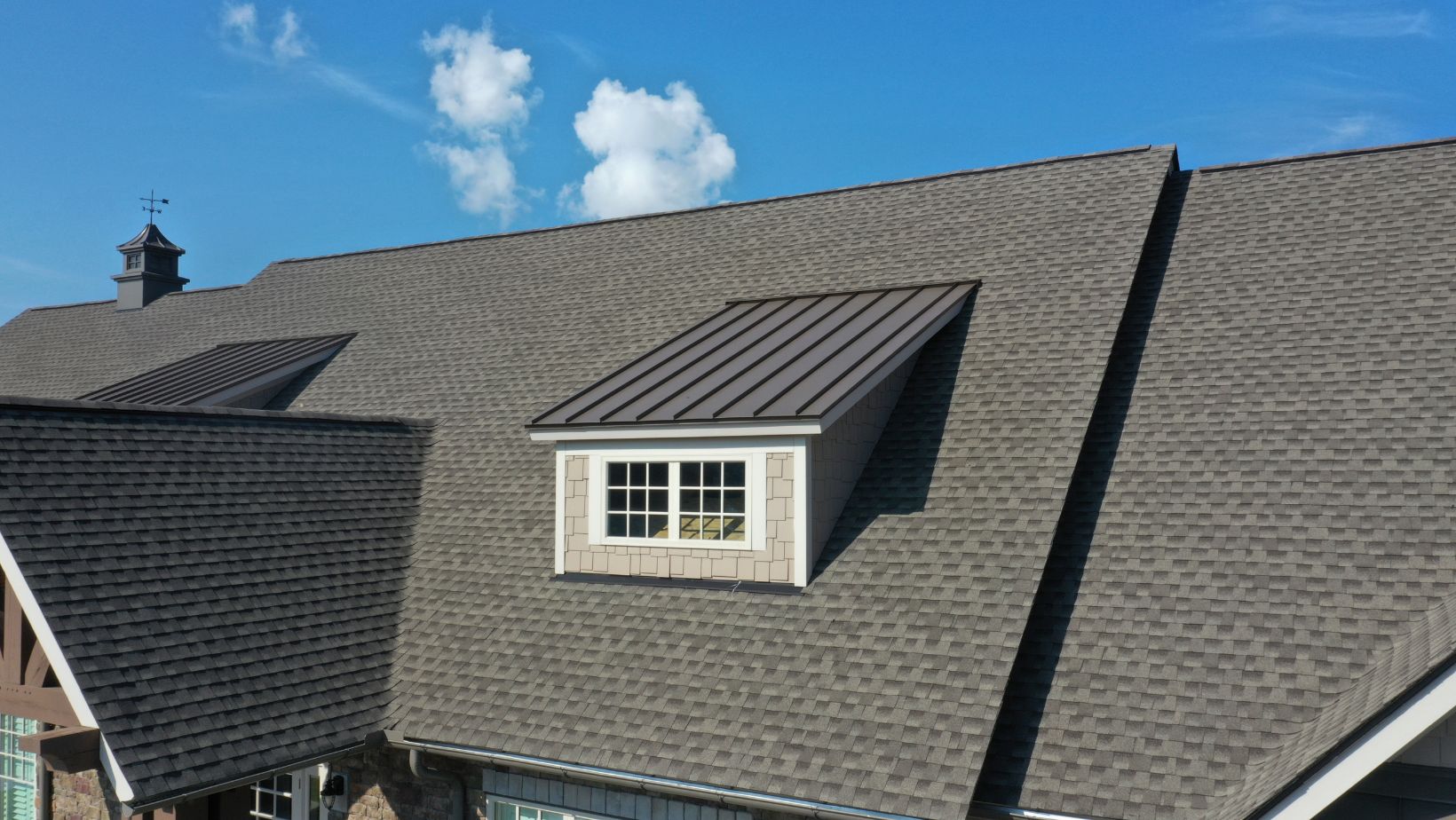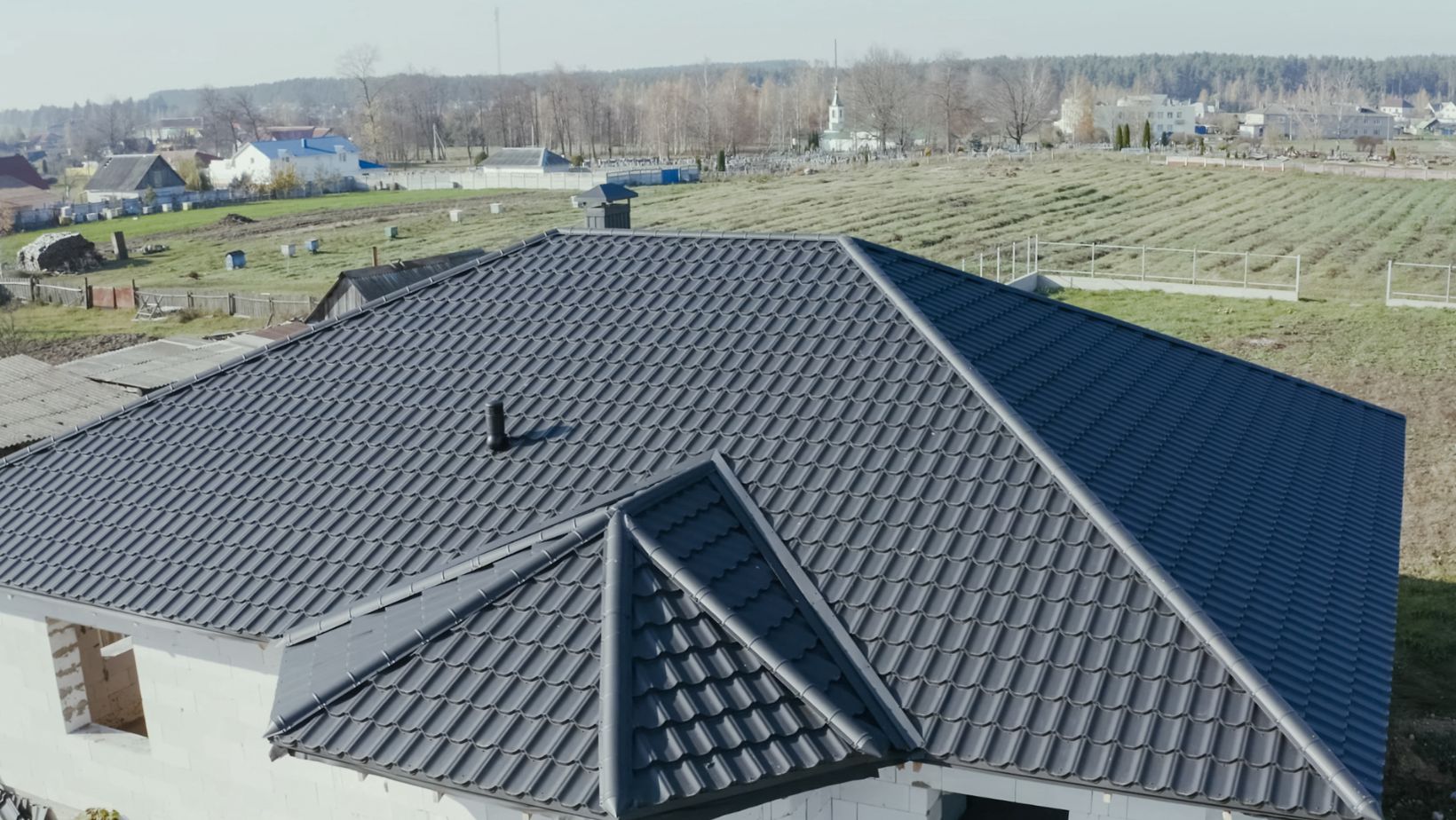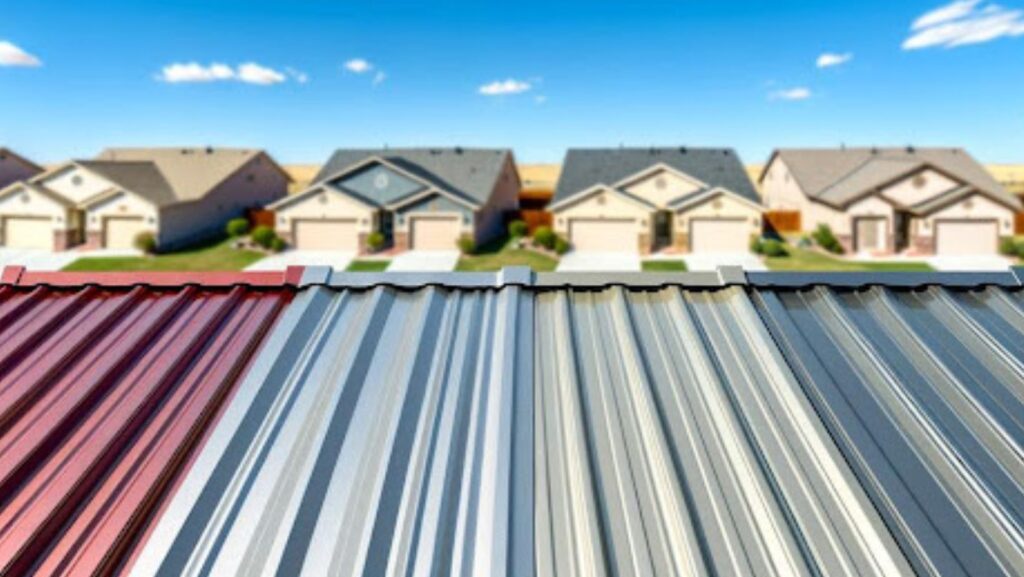When it’s time to install a new roof, the array of metal roofing options can feel overwhelming. You’ll need to consider standing seam panels for their weather resistance, though they demand professional installation. Perhaps corrugated metal appeals to you with its affordability and durability, but what about the aesthetic charm of metal shingles and tiles? Then there’s stone-coated steel, blending strength with beauty, and don’t overlook aluminum and copper for their impressive corrosion resistance and sustainability. Each material has its unique benefits and trade-offs, so how do you determine which one suits your specific needs?
Standing Seam Panels
Standing seam panels, characterized by their raised interlocking seams, offer superior weather resistance and a sleek, modern appearance. You’ll appreciate their ability to protect your home against harsh weather conditions, thanks to the vertical legs that interlock and create a continuous seam. This design minimizes the risk of water infiltration, making them an excellent choice for areas prone to heavy rainfall or snow.
When it comes to installation techniques, standing seam panels require precise handling and expertise. You’ll need to ensure that each panel is properly aligned and securely fastened. The installation process typically involves fastening clips that allow for thermal expansion and contraction, reducing the likelihood of panel warping over time.
Additionally, the raised seams are mechanically or hand-seamed to enhance their structural integrity and watertightness.
Corrugated Metal Roofing
Corrugated metal roofing, known for its distinctive wavy pattern, provides exceptional durability and cost-effectiveness for a variety of building applications. This roofing material is particularly popular in agricultural, residential, and commercial settings due to its robustness and ability to withstand harsh weather conditions.
When considering the installation process, you’ll find that corrugated metal roofing is relatively straightforward. Sheets are typically overlapped and fastened directly to the roof deck or purlins using screws with rubber washers to prevent leaks. The interlocking design enhances structural integrity and offers excellent protection against rain and snow. It’s crucial to ensure proper alignment and secure fastening to maximize the lifespan of your roof.
From a cost analysis perspective, corrugated metal roofing is one of the most economical options available. The material itself is affordable, and its longevity means you’ll save on replacement and maintenance over time. Additionally, corrugated metal is highly energy-efficient, reflecting solar heat and reducing cooling costs during hot months.
Initial installation costs can vary depending on the complexity of the roof design and labor rates, but the overall investment is often lower compared to other metal roofing options, making it a smart choice for budget-conscious projects.
Metal Shingles and Tiles
Metal shingles and tiles, often chosen for their aesthetic appeal and durability, provide a versatile and long-lasting roofing solution that mimics traditional materials like slate, wood, and clay. These metal options are engineered to replicate the look of conventional roofing materials, making them an excellent choice if you desire both the classic visual appeal and the modern benefits of metal roofing.
In terms of aesthetic appeal, metal shingles and tiles come in a wide array of colors, finishes, and textures. This variety allows you to match your roof with the architectural style of your home, whether it’s contemporary or historic. The high-definition coatings used on these shingles and tiles not only enhance their visual appeal but also provide additional protection against weathering and corrosion.

The installation process for metal shingles and tiles is straightforward but requires precision. They’re typically installed over a solid substrate and secured with fasteners that ensure stability and resistance to high winds. An interlocking design helps maintain the integrity of the roof, prevent leaks, and minimize maintenance. Proper installation is crucial to fully leverage the longevity and performance benefits offered by metal roofing materials.
Stone-Coated Steel
Stone-coated steel roofing combines the strength of steel with the aesthetic appeal of traditional roofing materials, offering a durable and visually pleasing solution for residential and commercial buildings. This type of roofing consists of a steel core coated with a layer of stone granules, providing both robustness and an attractive finish.
The stone granules come in various colors and textures, mimicking the look of clay tiles, wood shakes, or asphalt shingles, thereby enhancing the aesthetic appeal of your property.
When conducting a durability comparison, stone-coated steel stands out due to its exceptional resistance to the elements. It can withstand wind speeds up to 120 miles per hour, resist hail impact, and is non-combustible, providing superior fire protection. Additionally, the corrosion-resistant properties of galvanized steel ensure a long lifespan, often exceeding 50 years, with minimal maintenance.
Furthermore, stone-coated steel roofing is lightweight, making it easier to install and reducing the structural stress on your building. This can be particularly advantageous if you’re retrofitting an existing roof.
Aluminum and Copper Roofing
Aluminum and copper roofing offer unique benefits, including exceptional corrosion resistance and attractive patinas, making them popular choices for both residential and commercial applications. Aluminum is lightweight yet durable, providing excellent resistance to rust, which makes it ideal for coastal environments. Its natural reflectivity also enhances energy efficiency by reducing cooling costs.
Copper roofing is renowned for its longevity and distinctive aesthetic, developing a beautiful patina over time that protects it from the elements. This patina not only adds to the visual appeal but also extends the roof’s lifespan, often exceeding 50 years, with minimal maintenance.

When considering environmental impact, both aluminum and copper are highly sustainable. Aluminum is often made from recycled materials, and its recyclability doesn’t degrade its quality. Copper, similarly, is 100% recyclable, making it an eco-friendly option.
In terms of cost comparison, aluminum tends to be more affordable than copper. However, initial costs for copper roofing are higher, reflecting its premium status and extended durability. While the upfront investment in copper is substantial, its long-term benefits can offset the initial expense.
Ultimately, your choice will depend on your budget, aesthetic preferences, and environmental considerations.
Conclusion
It’s no coincidence that choosing the right one from different types of metal roofing material can significantly enhance your home’s durability and aesthetics. Whether you opt for the sleek finish of standing seam panels, the cost-effective resilience of corrugated metal, the classic look of metal shingles and tiles, or the premium appeal of stone-coated steel, aluminum, or copper, each option offers unique benefits.
By carefully considering your budget and desired lifespan, you’ll ensure your roofing choice perfectly aligns with your needs.
